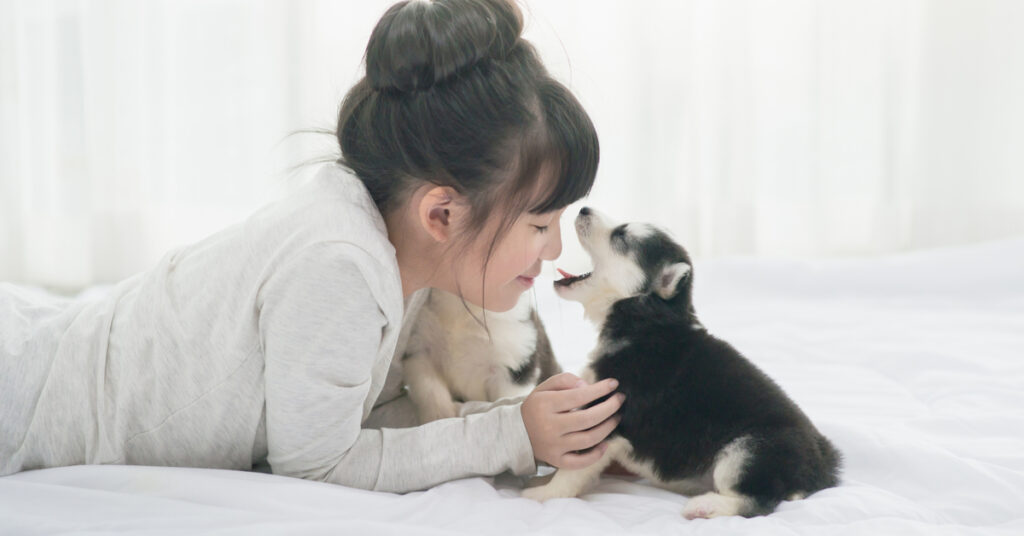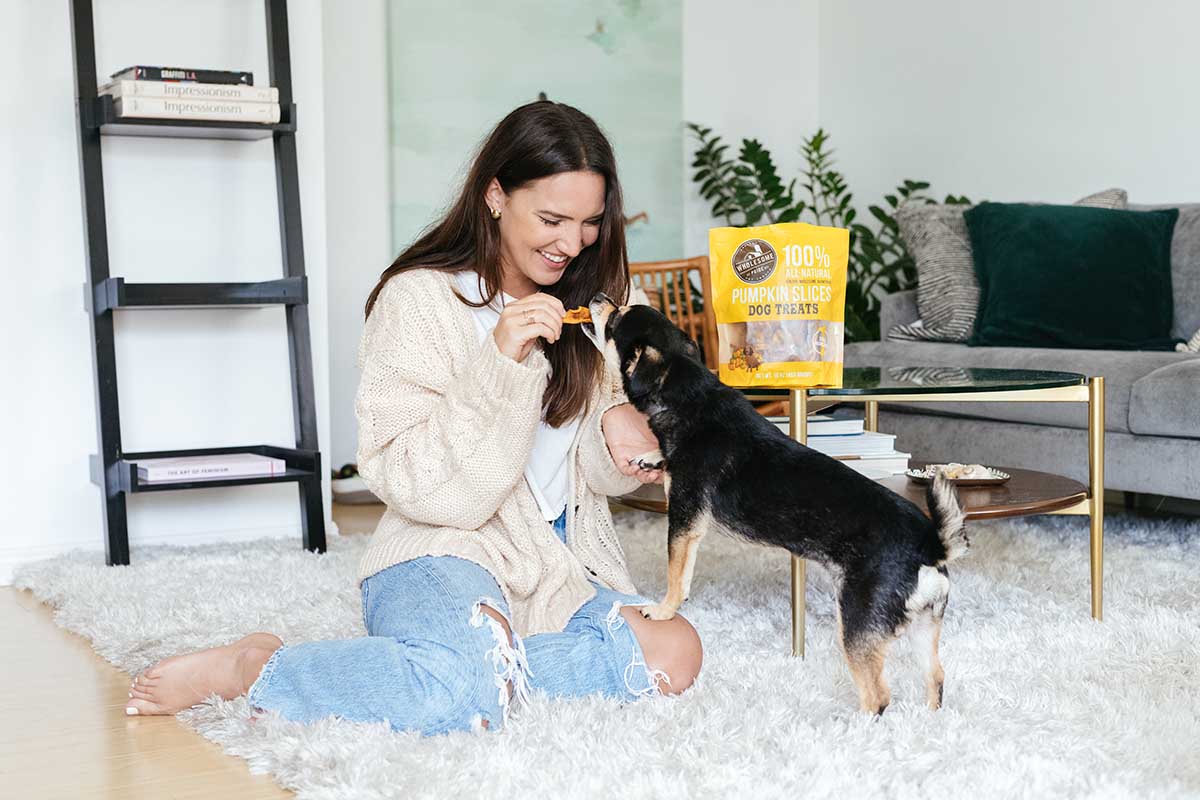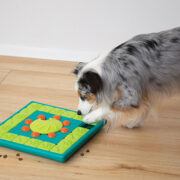Dog owners often think it will be a great idea to get two puppies from the same litter. They’re family members or littermates. It seems like such a great idea because dogs are social animals, and they won’t have to be alone in the home all day if you work.
There’s a problem, however, and it is called littermate syndrome. It’s because of this problem that professional trainers will often recommend against this idea. In fact, they will even recommend that you don’t get two puppies that are close in age even if they are from different litters.
The fact is that littermate syndrome can cause all kinds of behavioral issues, but let’s start with the basics. What is littermate syndrome and why is it such a problem?
The Facts About Littermate Syndrome

Dog owners have anecdotally reported problems with having two littermates in the same home. They talked often about certain behavioral issues like aggression and extreme separation anxiety, and that’s on top of having double the cost of one puppy, double trouble with potty training, and basic obedience issues that arise with young puppies.
Still, little empirical research has been done on the subject, and many people still debate the existence of the problem. One guide dog organization did do an experiment, however, and they found some startling results.
They discovered that when two puppies from the same litter were placed in the same new home, one of the puppies always had behavior problems. This was true even if both puppies were perfect candidates for guide dog training.
The problem was that the two puppies came to rely on each other a little too much. They had problems with hyper-attachment. Even if both puppies were bold and outgoing when placed in the home, this would always happen. Moreover, one of the sibling pups would always become shy.
Because this created such a problem with the shy puppy, the experiment was halted, and it is now the policy of guide dog organizations to only place one pup in a raiser’s home no matter the experience level of the raiser.
What are the Signs of Littermate Syndrome?

There are several heart-breaking effects of littermate syndrome. As mentioned, one of the puppies becomes shy and increasingly withdrawn. This becomes such a problem that the introverted pup never reaches its full potential.
The puppy that is the bold one has problems too. They tend to become very nervous and anxious, particularly when separated. It’s an extreme form of separation anxiety. The shy puppy also experiences this.
Additionally, both puppies often have problems bonding with their human family as strongly as dogs normally do. In fact, sometimes they fail to bond at all. That’s not the end of their problems either.
When they mature, they begin exhibiting severe dog aggression towards each other. It can become so bad that the only solution is to rehome one of the dogs. What’s more, even non-sibling puppies can have problems with this syndrome.
That’s why professional trainers recommend that if you want to get two puppies, you should wait to get the second one for at least six months after getting the first. The risks are too high for littermate syndrome otherwise.
How Does Littermate Syndrome Affect the Puppies’ Relationship with Their Pet Parents?

As mentioned, it can result in a failure of one or both puppies to bond with the new owners. But there are other problems it can create as well.
Both dogs may develop an extreme fear of people in general as well as other dogs. That can result in leash aggression and other behavioral issues. What’s even worse is that these behavior problems intensify in older dogs.
Can You Prevent Littermate Syndrome in Dogs?
It is theoretically possible to prevent littermate syndrome by doing things like taking the dogs for separate walks, enrolling them in separate training classes, and setting up separate playtime for each with their pet parents.
You can already see that’s a lot of extra work for the new owner. You’re effectively doubling the workload, and the puppies won’t get the benefits of bonding with each other which is probably why you want two in the first place.
The best way to prevent littermate syndrome actually appears to be either spacing out the adoption of new puppies or adopting adult dogs who have finished developing.
The puppies need to have more one-on-one time with their new owners than they have with each other, effectively doubling the work and negating any of the possible benefits (i.e. companionship) that they were adopted together for in the first place.
Can You Manage Littermate Syndrome with Dog Training?

What if you already have a pair of littermates and you don’t want to give them up? Is there anything you can do to prevent the problems between sibling dogs? Well, to start, you need a good plan, and there may also come a time when you need to consult a professional dog trainer or animal behaviorist too.
The problem that sibling pups have when they are raised together is that they can develop a hyper-attachment to each other. They don’t develop the confidence they need to be separated from one another, and they don’t know how to properly behave when they are together.
There are ways you can both prevent littermate syndrome and manage it once it has already begun to be a problem. Let’s take a look at how you can work through this heartbreaking condition.
Dog Training Separately

While it sounds backward, when you’re raising littermates, most of the best training sessions you will have with them is when they are separated. Yes, you want the dogs to behave well when they’re together, but to get them to do that, you need to properly socialize them separately.
For this reason, they should be kept in separate crates when crated. The crates can be next to each other, but the dogs should never be together in the same crate. You can put them next to each to start so that they won’t suffer too badly from separation anxiety.
As they adjust to the separate crates, you can then begin to slowly move the kennels apart. This will encourage the puppy siblings to build some independence.
You’ll also want to take them both to obedience classes, but they should be in separate training classes. You really do need to train each dog without its sibling around. That’s also why you should plan any outings separately as well.
An important element for good dog behavior is socialization. While you’re out with each puppy sibling, be sure to work on their individual social development. You want each of them to be well-socialized to new experiences, new people, and new dogs.
They should be exposed to everything they might encounter as adult dogs. This would include new and different types of people (different ages, sizes, and appearances), new dogs, other animals, bicycles, cars, and anything else that is common in your community.
They need to experience any normal stimuli they might be exposed to where they live. This would also include any loud noises that are heard in your area as well as different smells. You should also take them to places where they will go frequently like the dog park so they can become accustomed to all the different stimuli they will experience there.
Dog Training Together
Once the sibling dogs are doing well with their basic obedience and social development, you also want to begin some joint obedience training. You can begin going for walks where each dog has a different dog trainer.
Start by walking them together for a little while, and then, have each handler take their dog in a separate direction. If they don’t respond well, then you’ll need to flag the bad behavior and create a new plan for your training sessions.
Once the dogs do well walking together for a little while, you can now move on to training them within sight of each other. Still, practice moving them away from one another and back together at random intervals.
You also want to expose the dogs to various stimuli when they are together. This includes having them meet new dogs and new people to ensure they don’t exhibit any aggressive behavior.
Additionally, both excitement and fear will be amplified when the dogs are together, so you want to practice this often to make sure they are well-socialized both when they are apart and when they are together.
Even though you are now training them together, you also want to continue the separate obedience classes and training sessions as well. You don’t want them to slip into bad behavior.
Final Thoughts

The best solution to littermate syndrome is to prevent it by avoiding raising siblings together. If you want to get a pair of puppies, it’s best to get them from different litters and space out introducing them to their new home.
Make sure you bring each of your new family members home at least six months apart. That way you can begin the house training and socialization of one pup before the second dog arrives. Of course, you can also choose to adopt adult dogs over a year old who have already developed their independent personality.
If you already have sibling pups and want to prevent or need to remedy littermate syndrome, you’re going to need an intensive dog training plan that will help each dog socialize properly and develop its own unique, independent, and confident personality. That will make all of your family members much happier!

